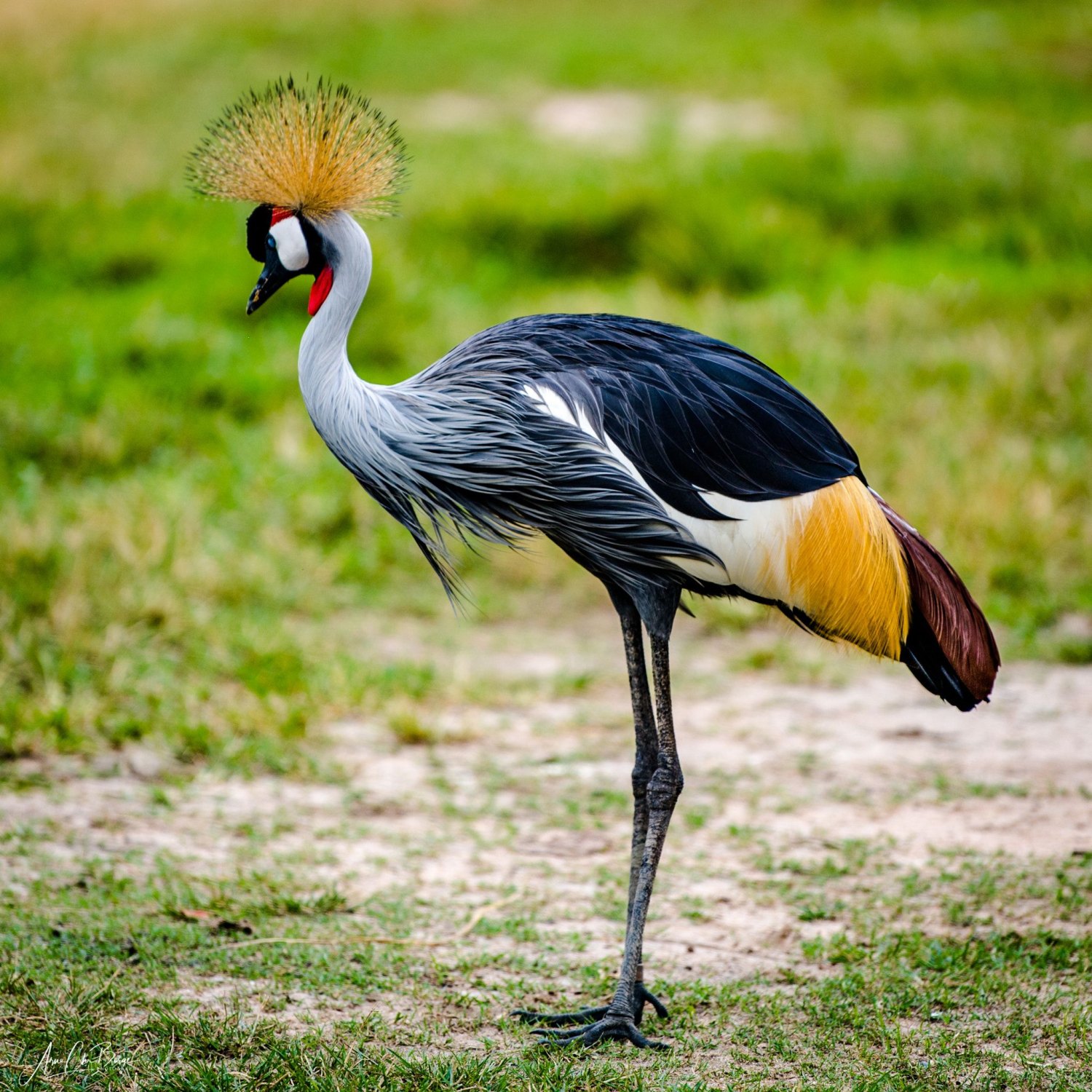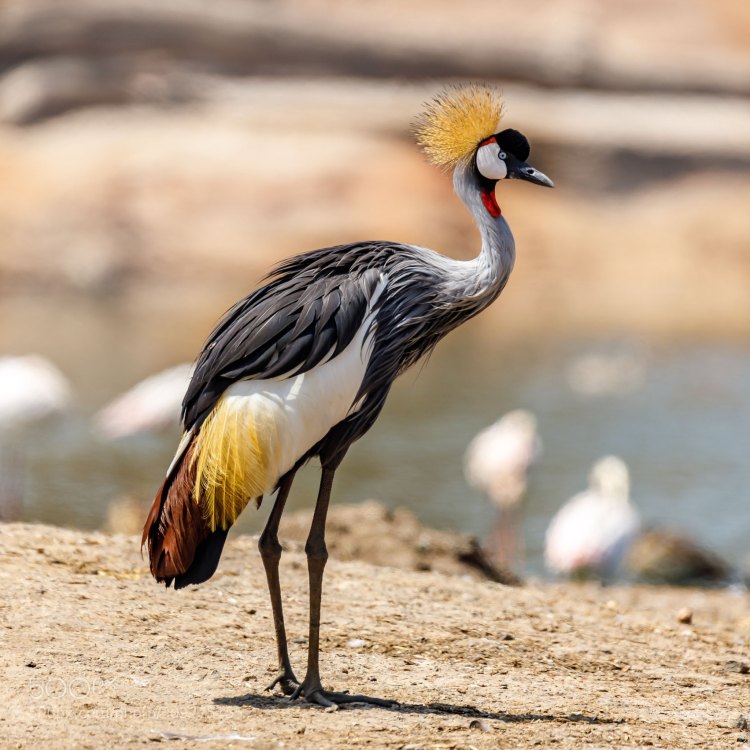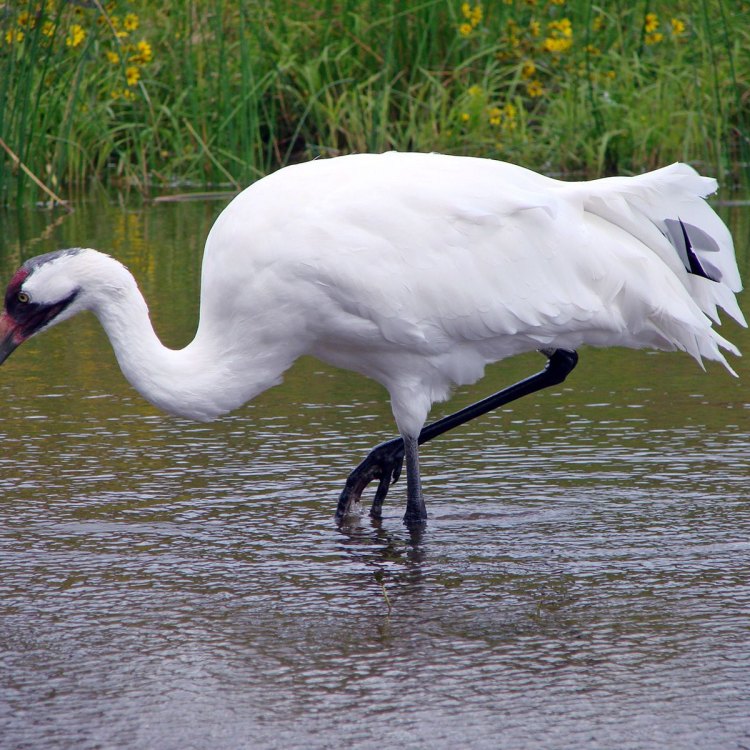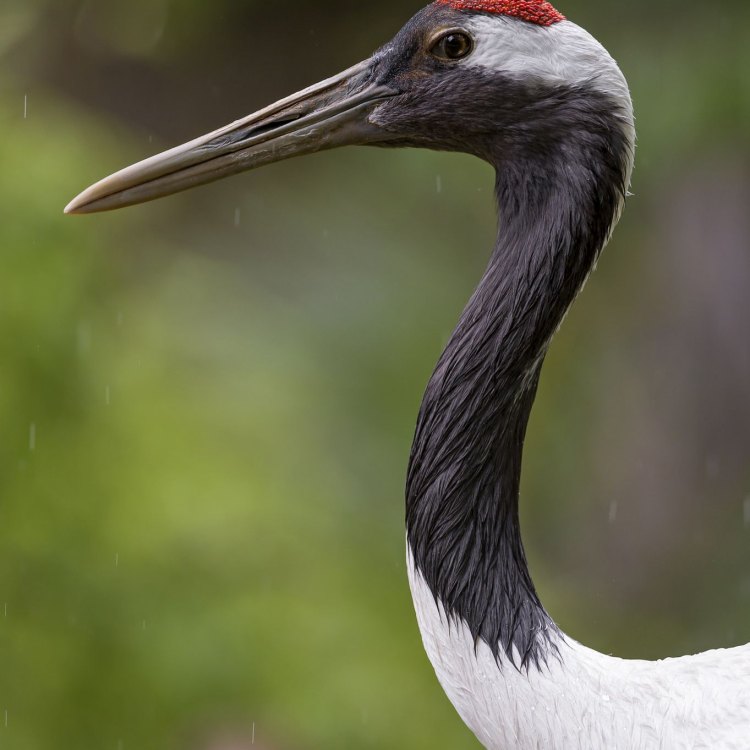
Crane
100-130 cm
The elegant crane, from the Gruidae family, is a majestic bird that can be found in various wetland habitats. Stretching 100-130 cm in length, these tall birds are known for their long legs, necks, and beaks. Keep an eye out for these beauties next time you visit a wetland! #crane #wetland #birdwatching
Animal Details Summary:
Common Name: Common Crane
Kingdom: Animalia
Habitat: Wetlands, grasslands, and agricultural fields
The Graceful and Enchanting Common Crane
The common crane, scientifically known as Grus grus, is a magnificent bird found in various wetland habitats across Eurasia and parts of Africa. Known for its tall stature and elegant movements, this bird is a beloved and admired creature among nature enthusiasts.The Order Gruiformes – The Home of the Common Crane
The common crane belongs to the class Aves, the class of birds. These birds, with their wings, feathers, and beaks, are some of the most stunning creatures on our planet Crane. Within the aves, the common crane is part of the order Gruiformes, named for their large and sometimes awkward-looking feet. This group also includes other waterbirds such as rails and coots.The common crane's family is Gruidae, which consists of 15 species of cranes worldwide. These birds are found across every continent except Antarctica, with the common crane being the most widespread and abundant.
A Magnificent Animal with Stunning Plumage
With its distinctive, white, black, and gray plumage, the common crane is often described as a work of art. The feathers on its body are a mix of shades of gray, giving it a regal and sophisticated appearance. Their necks and wings are predominantly white, with black crown feathers giving it an almost royal look.While male and female cranes have similar appearances, they can be differentiated by their size. Males are slightly larger than females, measuring 100-130 cm in length, with a wingspan of up to 240 cm Caecilian. Their long legs and necks add to their impressive stature, making them an easy bird to admire from afar.
Exploring the Habitat of the Common Crane
To catch a glimpse of the common crane, one may have to journey to wetlands, grasslands, and agricultural fields, which are its preferred habitats. These birds prefer open areas, where they can forage for food and take flight with ease. In Europe, they are a common sight in the agricultural fields of Spain and Portugal, while in Asia, they can be found in Mongolia, Kazakhstan, and India.The common crane is a highly adaptable bird, and as such, it is not limited to a particular country or region. They have a broad range of distribution, with their presence felt across the world. They are also known to migrate seasonally, moving to warmer climates during the winter months.
Feeding Habits of the Common Crane
The common crane is an omnivorous bird, meaning it has a diverse diet that includes both plant and animal matter. They forage for vegetation in the form of seeds, tubers, and grains in agricultural fields and wetlands. They also feed on worms, insects, and small fish, making them a vital part of their ecosystem.In some areas, they are known to engage in cooperative feeding, where they work together in groups to flush prey for easier access. This behavior is a testament to the intelligence and social nature of these birds.
Origins of the Common Crane
While the common crane has a broad distribution, its origins can be traced back to various countries in Europe and Asia. These include Spain, Germany, Russia, and China. They are also the national bird of Estonia, where they are revered for their beauty and grace.In parts of Europe, the common crane is a symbol of good luck and longevity, making it a treasured and protected bird. Many ancient cultures, including the Celts and Chinese, have depicted the crane in their art and mythology as a powerful and mystical creature.
A Marvel of Nature – The Common Crane's Mating Displays
One of the most fascinating behaviors of the common crane is its courtship rituals. These elegant birds are known for their graceful mating dances, where they jump, bow, and flap their wings in a synchronized routine. These dances are not only beautiful to witness, but they also serve as a way for the birds to bond and establish dominance within their pairs.Once a pair has mated, they remain monogamous for life, with both partners equally involved in raising their offspring. This behavior is a testament to the strong and devoted bond between the birds and their young.
Conservation Status and Threats
Despite their widespread distribution, the common crane is listed as a 'least concern' species by the International Union for Conservation of Nature (IUCN). This is due to their adaptability and large numbers in the wild. However, they do face threats such as habitat destruction and illegal hunting in some areas.Fortunately, conservation efforts, such as the protection of wetland habitats and anti-poaching laws, are in place to ensure the continued survival of these magnificent birds. In some countries, ecotourism has also become a source of income and a way to observe and appreciate these beautiful creatures in their natural habitat.
The Common Crane – A True Natural Wonder
In conclusion, the common crane is a true marvel of nature. From its stunning plumage and graceful movements to its unique mating displays and vital role in various ecosystems, it is a creature worth admiring and protecting. As we continue to appreciate and safeguard these birds, we are also ensuring that future generations can witness their timeless beauty and majesty for years to come.

Crane
Animal Details Crane - Scientific Name: Grus grus
- Category: Animals C
- Scientific Name: Grus grus
- Common Name: Common Crane
- Kingdom: Animalia
- Phylum: Chordata
- Class: Aves
- Order: Gruiformes
- Family: Gruidae
- Habitat: Wetlands, grasslands, and agricultural fields
- Feeding Method: Omnivorous
- Geographical Distribution: Eurasia and parts of Africa
- Country of Origin: Various countries in Europe and Asia
- Location: Various wetland habitats
- Animal Coloration: Gray with black and white plumage
- Body Shape: Tall with long legs, neck, and beak
- Length: 100-130 cm

Common Crane
- Adult Size: Large-sized bird
- Average Lifespan: 20-30 years
- Reproduction: Monogamous
- Reproductive Behavior: Build large mound nests on the ground
- Sound or Call: Loud, trumpeting calls
- Migration Pattern: Long-distance migratory
- Social Groups: Form large flocks during migration and breeding season
- Behavior: Social and territorial
- Threats: Habitat loss, hunting, and illegal trade
- Conservation Status: Least Concern
- Impact on Ecosystem: Important for wetland ecosystems
- Human Use: Game bird and cultural significance
- Distinctive Features: Red crown on the head
- Interesting Facts: The common crane is known for its elaborate courtship dance
- Predator: Large birds of prey and mammals

Grus grus
The Marvelous Crane: A Majestic Bird of the Skies
The crane, a large-sized bird, has long captured the fascination and admiration of humans. With its sleek and graceful appearance, it is not surprising that it has become a symbol of wisdom, longevity, and loyalty in many cultures. But there is more to this magnificent bird than meets the eye.In this article, we will explore the unique features of the crane and discover why it is an important and integral part of our ecosystem PeaceOfAnimals.Com.
A Glimpse into the Life of a Crane
The crane belongs to the Gruidae family, with a total of 15 different species found across the globe. These majestic birds can be found in almost every continent, except for Antarctica and South America. They are mostly found in wetland areas such as marshes, swamps, and rivers, where they feed on a variety of plants, insects, and small animals.One distinctive feature of the crane is its large size, reaching up to 6 feet in height and weighing between 5 to 15 pounds. With a wingspan of up to 8 feet, they are known as some of the largest flying birds.
The average lifespan of a crane is 20 to 30 years, making them long-lived birds. This can be attributed to their monogamous and loyal nature, where they mate for life and stay with their partner throughout the year.
During the breeding season, cranes are known for their elaborate courtship dances and displays. This behavior helps to strengthen the bond between the mating pair and also attracts potential mates Chinese Paddlefish. The most famous is the common crane's dance, where they leap into the air, stretch their wings, and call out with loud trumpeting sounds.
Nesting Habits and Social Behavior
Cranes build large mound nests on the ground, using wetland vegetation and sticks. These nests can reach up to 6 feet in diameter and are usually built near water bodies for easy access to food. The female crane lays 1 to 3 eggs, and both parents take turns incubating the eggs for about a month.Once the chicks hatch, the parents work together to protect and feed them until they are ready to fly around 2 months old. This monogamous and cooperative behavior is essential for the survival of the species.
Cranes are social and territorial birds, forming large flocks during migration and breeding season. These flocks can consist of thousands of birds, flying and roosting together. They also have a well-defined hierarchy within the flock, with dominant birds having the highest status.
Threats to the Crane
Like many other species, cranes face some major threats in the wild. The most significant threat is habitat loss, with wetland areas being drained or converted for agricultural purposes. This leads to a loss of breeding and feeding grounds for cranes, making it difficult for them to survive.Illegal trade and hunting are also major threats, with cranes being hunted for their meat, feathers, and even for medicinal purposes. This has resulted in a decline in some crane species, especially the Siberian and Red-crowned cranes.
Conservation Efforts and Status
Despite these threats, the conservation status of cranes is currently listed as 'Least Concern' by the International Union for Conservation of Nature (IUCN). This is due to the efforts of various conservation organizations and governments to protect and preserve their habitats.The International Crane Foundation, founded in 1973, has been at the forefront of crane conservation, with projects aimed at protecting and restoring crane habitats, breeding programs, and public education. Governments in countries where cranes reside have also implemented laws and regulations to protect these magnificent birds.
The Crane's Role in the Ecosystem
Cranes play a crucial role in maintaining the balance of wetland ecosystems. As predators, they keep the population of small animals and insects in check, preventing them from becoming overpopulated and causing harm to the environment. They also contribute to plant pollination and dispersal, aiding in the growth of vegetation in wetland areas.Their presence also supports the health and diversity of other species, making them important for the overall well-being of wetland ecosystems.
Human Use and Cultural Significance
Apart from their ecological importance, cranes also hold cultural significance in many communities around the world. In Japan, the red-crowned crane symbolizes luck and longevity, and their image is often depicted in art and literature.In some parts of Asia, cranes are considered as game birds, with their meat being a delicacy. However, there are strict regulations in place to prevent overhunting and ensure sustainable use.
Distinctive Features and Interesting Facts
Apart from their large size and elaborate courtship dances, cranes are also known for their distinctive features. One of the most striking characteristics is the red crown on their head, which gives them a regal and striking appearance.But perhaps the most interesting fact about cranes is their ability to undertake long-distance migration. Some species of cranes can travel up to 7000 miles, crossing entire continents and different countries. This feat is even more impressive considering their size and weight.
Predators of the Crane
Although cranes are large and powerful birds, they do have predators in the wild. Large birds of prey such as eagles and owls are known to prey on crane chicks and even adult cranes at times. Other predators include carnivorous mammals like foxes, wolves, and bears.However, the biggest threat to cranes comes from humans, who often hunt and kill them for various reasons.
In Conclusion
The crane is truly a marvelous bird, with its large size, graceful movements, and significant role in our ecosystem. From their elaborate courtship dances to their long-distance migration, there is no doubt that cranes are fascinating creatures that deserve our admiration and protection.But we must also remember that their survival depends on the health of wetland ecosystems. As such, it is crucial to support conservation efforts and promote sustainable practices to ensure the continued existence of these majestic birds in our world.

The Graceful and Enchanting Common Crane
Disclaimer: The content provided is for informational purposes only. We cannot guarantee the accuracy of the information on this page 100%. All information provided here may change without prior notice.












